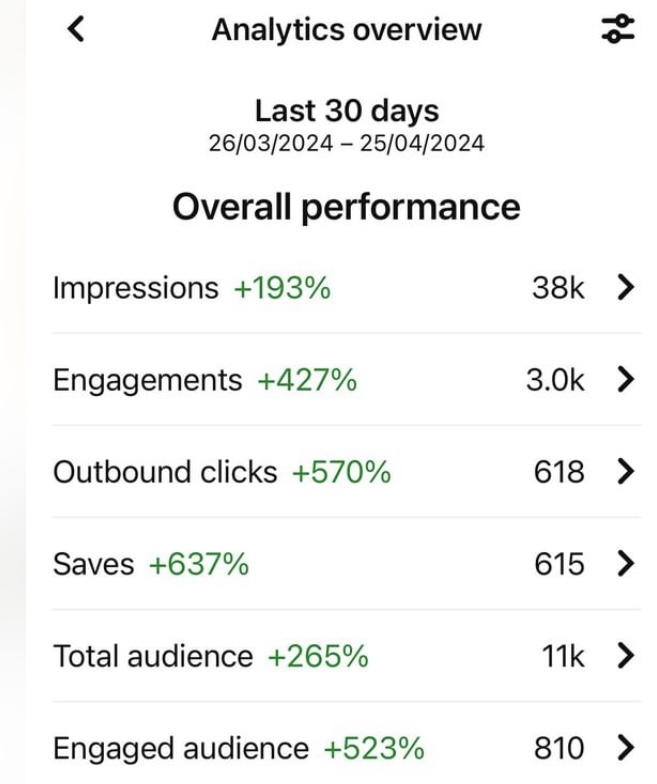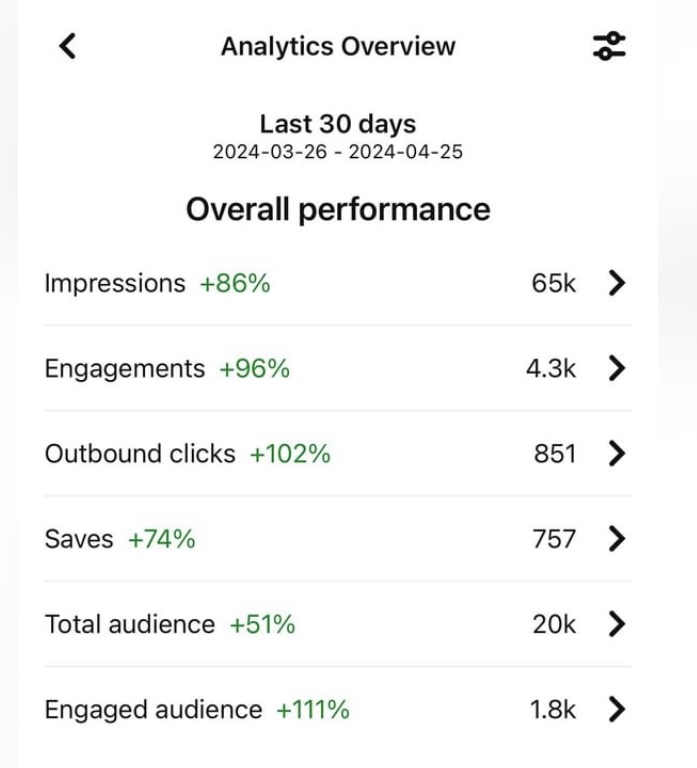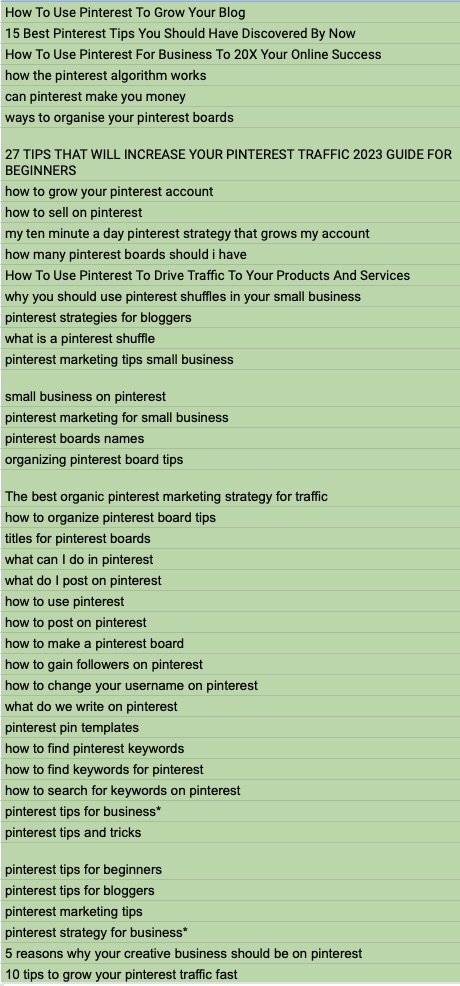HOW TO FIND PINTEREST FRIENDLY TOPICS FOR YOUR BLOG POSTS

Bonus Material: Free 50 Best Pinterest Tips Guide
Introduction
For bloggers who want to see great gains in organic traffic to their blog posts.
With all of the updates Google has been making to it’s platform, many bloggers have seen their Google blog traffic decimated by those changes.
If you’re a blogger who has been impacted by Google’s recent updates, and you really need to find other ways to drive organic traffic to your blog, you’re in the right place.
Pinterest is an incredible platform for organic traffic.
Many bloggers who’ve been hit by Google’s updates have moved their attention to Pinterest, and rightly so – Pinterest is such a great way to drive organic traffic to your blog posts.
Unlike social media platforms where many people are scrolling for entertainment, Pinterest users are in the platform actively looking for ideas, inspo, answers, and solutions to thousands of different topics.
It’s highly likely that there’s an audience inside Pinterest looking for the information you provide in your blog posts.
This is great news!
It means you have the opportunity to double down on some good Pinterest strategy, to put your blog posts in front of your audience ORGANICALLY.
I have ladies inside my 40k Club membership who are killing it on Pinterest right now.
Some have ad revenue on their blogs, and they’re earning 5 figures in ad revenue alone, just from the traffic they’re able to drive from Pinterest to their blogs.
Here are some metrics from a couple of ladies’ Pinterest accounts over a 30 day period. These are YOUNG Pinterest accounts, not established ones, but you can see the volume of organic traffic (outbound clicks) they’ve achieved on Pinterest:-


These are small metrics from accounts that are pretty new.
I have other ladies inside my 40k Club membership who are seeing anywhere between 14k and 30k outbound clicks from Pinterest to their blogs EVERY MONTH.
Today I looked at the metrics of one of those ladies’ Pinterest accounts for a 6 month period (October – March). Here are her metrics for that period:

Just short of a quarter of a million outbound clicks from Pinterest to her blog over a 6 month period. This is the power of Pinterest.
You can see from these metrics just how great Pinterest can be, offering you a brilliant alternative to Google for organic traffic generation.
Rather than opting to create blog posts that are purely Google friendly, it’s well worth considering creating blogs that are also Pinterest-friendly, so that you can optimise your blogs for Pinterest SEO, to be able to use Pinterest for organic traffic.
Let’s take a look at how you do that.

1. Keyword Research
Your starting point in looking for a Pinterest-friendly blog post to write about, is to go to Pinterest to find the right Pinterest long-tail keywords for your blog topics.
Pinterest’s entire platform works off keyword optimization.
You need to be able to connect your blog posts to the best keywords your audience is inside Pinterest searching for,
You can then post keyword optimized pins on Pinterest, that lead to topic related blog posts.
It’s a really good idea to spend time inside Pinterest searching for the right long-tail keywords to use for your blog topics.
For example, as a Pinterest strategist, I want to be able to write blog posts that are about Pinterest, and are Pinterest-friendly.
So if I go in to Pinterest and search for the keyword “Pinterest” (I show you how I do this in the bonus video below), these are the results that come up:

There really aren’t any good long-tail keywords in that search that would make good blog posts, except perhaps the last one “pinterest board ideas” – I could certainly write a blog post about that.
If I dive deeper with my search, and I type “Pinterest Tips And Tricks” into the search bar, these are the results that come up:

Great – on that search result there are some long-tail keywords I could write blogs about, specifically “pinterest title ideas” and “pinterest TikTok”.
But still – the results are not that brilliant, so I’ll dive a little deeper, and this time I’ll type “Pinterest Strategy” into search. Here are the results that come up:

Other than “pinterest strategies for bloggers”, there’s not a lot I can use in this search, but that’s ok. This is how Pinterest is. You have to keep digging, because the long-tail keywords WILL be there if you stay patient and search enough.
So I keep going to find the right phrases to put into the search bar, to find better results.
Rather than show you loads of images that show those deeper searches, I’ve created a bonus video where you can see how I keep digging to find the best long tail keywords I can blog about.
By the time I’ve finished my keyword research in Pinterest (shown in the video above), these are all the long tail keywords I’ve found that I can turn into Pinterest friendly blog posts:
- How to use Pinterest
- How to post on Pinterest
- How to make a Pinterest board
- How to get Etsy traffic from Pinterest
- Driving traffic to Etsy with Pinterest
- How to get more traffic on Etsy from Pinterest
- Pinterest tips for business
- Pinterest tips for bloggers
- Pinterest tips for beginners
- Pinterest traffic tips for bloggers
- Pinterest marketing tips for bloggers
- How to make money on pinterest for beginners
It took just a few minutes of searching inside Pinterest to find those Pinterest-friendly topics to blog about.
I’ll pop all these ideas on a Google spreadsheet, ready to consider which of them I would then create blog posts for.
If it’s also important to you to make sure your blog posts stand a chance of ranking on Google (is that even possible right now after all the updates?), you can take the Pinterest keywords you’ve found, and you can run them through software such as keysearch.co.
Doing this you can check to see what sort of competition there is for those keywords, and to research other blogs that have been created around those keywords, to get a sense of how you could write your blog post content for Google.
My priority is to find Pinterest- friendly blogs to write about.
But if I can make those blog posts as Google friendly as possible too, I’m going to do it.
Doing research inside Pinterest to find Pinterest-friendly keywords I can turn in to blog posts has given me literally hundreds of posts I can write about.
Here’s a screenshot of my Google spreadsheet with just some of my Pinterest-friendly blog topics:

2. Writing Your Blog Post
Once you’ve found some Pinterest-friendly topics you can write about, the next step is to get your blogs written, so that you can start pinning to them inside Pinterest.
There’s no hard and fast rule for the style of your blog content.
Pinterest will crawl your blog when you pin to it, but it does that mainly to make sure there’s a connection between the pins you post on Pinterest, the pin titles and pin descriptions you use, and the url destination your pins lead to.
Pinterest does not like a disconnect between your pins and the place your pins lead to, so you need to make sure that any pins you post match the blog posts connected to them.
You should always have a couple of pins inside your blog post so that your blog readers can then pin from your blog to their Pinterest boards.
This can help your growth on Pinterest.
If your blog is on WordPress, you can use the jquery plug-in to automatically add a Pinterest pinnable icon to images on your blog.
Jquery is the plug-in I use, there will be other plugins that do the same thing.
When you’re happy with the blog you’ve written (using good blogging strategy), and you have sent that blog live, you’re ready to start pinning to your blog on Pinterest.
50 BEST PINTEREST TIPS GUIDE
Get your free guide to learn 50 of the best Pinterest strategy tips to drive more organic traffic to your blog.
3. Optimising Your Pinterest Account
You need to make sure your Pinterest account is optimised, so that Pinterest shows your pins to the right people inside the platform.
This means making sure you have a Pinterest business account, and that you have the right keywords across your Pinterest account, including in your Pinterest bio, on your Pinterest boards – both board titles and board descriptions, and on your pin images, pin titles and every pin description.
All of the keywords you use helps Pinterest understand what your account is about, so that Pinterest can show your content to the right people performing searches inside the platform.
I have some other Pinterest related blogs you might useful – I’ve listed them at the end of this blog post.
Once your Pinterest account is optimised and ready to use, you can start pinning to your blog posts.
There’s some key Pinterest strategy you need to be aware of here, to make sure your pins have the best chances of being found, clicked on, saved, and clicked through to your blog posts.

4. Pinning To Your Blogs
Whenever you send a new blog post live, you should have some pins created for that blog, ready to pin them to your relevant boards in Pinterest.
The easiest way to create pins for Pinterest is over in Canva.
You can create thousands of different pin designs for free inside that platform.
Canva is where I create all of my pins. Most of the ladies in my 40k Club create their Pinterest pins in Canva too.
Ok. Let’s talk good pinning strategy. Here’s what you need to know.
At the time of writing this post I’ve seen that the pins that I create that are 1000 pixels wide by 1920 pixels long, seem to perform better than pins that are 1000 pixels wide by 1500 pixels long.
So the longer pins seem to do better – that may just be because being bigger, they stand out more.
What I love about the longer pins, is they give you more space to really create great pin designs.
Let’s talk pin designs and latest Pinterest strategy.
Pinterest prefers FRESH PINS on the platform.
This means that once you’ve sent one new pin design live on the platform, you should never send that exact same pin design live again.
It’s ok if other people re-pin your pin designs, but as the creator you should ALWAYS be creating new pins every time you pin on the platform.
For example, for one blog post, if you create a pin design for that blog today and you pin it to Pinterest, you would not use that same pin design again.
You can go and change that pin design slightly (even changing the colour or font of any text on the pin would make it a FRESH PIN in Pinterest’s eyes), but personally I prefer to make sure I create completely new pin designs every time I’m going to pin to the same blog post.
You SHOULD be pinning to the same blog post over and over.
But there’s good strategy around this that you need to understand.
If you put a fresh pin out for a blog post today, you should leave a gap of around 7-10 days minimum, before you put another fresh pin out that goes to that same blog post.
This never used to be the case.
At one time on Pinterest you could churn out pins to the same blog post day after day.
In fact you could churn out the SAME pin to the SAME blog post over and over without issue.
Not anymore.
As I’ve said, Pinterest favours FRESH PINS, and Pinterest also prefers that you do not ‘pin dump’ (sending too many pins to the same blog post day after day after day).
If you have plenty of blogs this isn’t an issue.
You can pin to a few blog posts today, you can pin to other blog posts tomorrow, and so on, so that you’re rotating through your blog posts, making sure that there’s space of 7-10 days between pinning to the same post.
This will help keep your Pinterest account safe, and growing.
If you have any text overlay on your pins (and I recommend you do – it’s like your call to action on the pin), you should make your pin text match as closely as possible the blog title you’ve used.
You should then make your pin title closely match and have your main keywords in the pin description. This all helps Pinterest understand what your pin is about, so it can index your pins to show them to the right people in the platform.
Using high-quality images on your pins is important.
Pinterest is a visual search engine.
If you can make your pin images high quality, and make them stand out, you’re going to achieve the best results from Pinterest.
Having the right strategy on Pinterest is important.
You cannot pull together a poor account with sloppy pins, and expect results.
Learning how to use up to date Pinterest best practices is going to help your pins be found, and get organic Pinterest traffic over to your blogs.
5. Having A Long Haul View
Pinterest as a platform is an incredibly powerful tool you can use to drive organic traffic to your blog.
But you need to understand that Pinterest is a slow-burn, long haul game.
Where social media platforms give you opportunity to post and go viral quickly, Pinterest is not like that.
But the benefit of Pinterest is that your pins on Pinterest can continue to gather traction and drive organic traffic to your blog for years and years to come.
That’s something that you don’t get on social media platforms.
So the investment you make now in writing Pinterest friendly blog posts, and pinning Pinterest friendly pins, can serve you over and over and over again, year after year inside the platform.
I have ladies inside 40k Club whose pins still bring organic traffic to their blogs more than eight years down the line.
Try achieving that sort of result on social!
Conclusion
Your target audience is on Pinterest.
They are there searching daily.
If you can find relevant keywords that match the searches your target audience is performing inside the platform, and you can then create great blog posts around those Pinterest keywords, you have chance of not only being found on Pinterest, but of driving organic traffic from Pinterest to your blog posts, so that you’re not entirely depended on Google for your traffic.
Being wholly dependent on Google for your blog traffic these days gives you an incredibly fragile blog – particularly if blogging is your main business.
Hop over to Pinterest.
Start researching some Pinterest friendly topics you can blog about.
Write those blogs.
Use Pinterest best practices to pin to your blogs.
And watch the organic traffic start to flow.
Finally – keep an eye on your Pinterest analytics.
Those metrics will give you important information about the types of Pinterest friendly topics you are blogging about that are performing well.
When you start to see trends with your Pinterest content – make a commitment to create more blogs around those winning Pinterest topics.
Bonus Material
Click Here For Your Free 50 Best Pinterest Tips Guide
Related Content
HOW MANY PINTEREST BOARDS SHOULD YOU HAVE?
HOW TO CHOOSE TITLES FOR YOUR PINTEREST BOARDS
